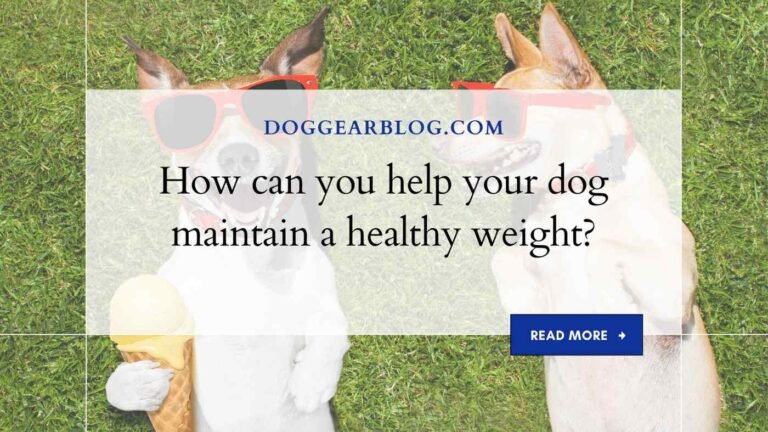What are the benefits of regular exercise for your dog’s health?
Is your furry friend in need of a little extra motivation to hit the pavement with you for their daily walk? Regular exercise is not only essential for maintaining good health in humans but also in dogs! In fact, it’s one of the most important things you can do for your pup’s physical and mental well-being.
From weight management to improved muscle strength and coordination, let’s explore the many benefits that regular exercise brings to your dog’s health. Get ready to energize your pup and have some fun while doing it!
What are the benefits of exercise for dogs?

Physical activity is essential for both human and canine health. Dogs who are kept active have a reduced risk of obesity, heart disease, certain types of cancer and other chronic ailments. Exercise also helps to reduce stress levels in dogs.
Dogs need about one hour of exercise per day, but the amount of activity your dog gets depends on his size, breed and age. A small breed that weighs 12 pounds or less needs about 30 minutes per day of easy walking or running.
A giant breed such as an American Mastiff that weighs 150 pounds or more may need up to one hour of moderate-to-vigorous exercise daily. Remember that puppies under six months old need minimal exercise, while older dogs will benefit from more aerobic activity.
Exercise also has mental benefits for dogs. It reduces anxiety and boredom symptoms in pets, improves their socialization skills and strengthens their bond with their owners. In addition, regular exercise allows dogs to use energy more productively and lead a healthier lifestyle overall by reducing destructive behavior .
What are the benefits of regular exercise for your dog’s health?
Regular exercise has a wide range of benefits for both dogs and humans, including improved mental health, stronger muscles, less weight gain, better sleep hygiene and reducedケause of chronic diseases.
Here are five specific benefits associated with aerobic exercise specifically for dogs:
1) Improved Mental Health
Getting your pup moving has been shown to improve their mood and overall well-being. In one study, dogs who exercised regularly were 30% less likely to experience clinically significant bouts of depression than those who did not!
Exercise has a natural antidepressant effect on the brain, promoting feelings of contentment and helping to reduce anxiety and stress levels.Regular physical activity also helps keep pets lean and healthy by burning calories; this in turn can help prevent weight gain around the waist (and subsequent heart disease).
One potential downside of all thisappiness? Some pet owners may inadvertently become overzealous about exercise, leading to guilt if their dog doesn’t accompany them on jogs or walks every day! If that’s you, try dispensing with short bursts of activity instead of long stretches; ten minutes of brisk play followed by a twenty minute lie-down is ideal.
2) Stronger Muscles
While muscle mass doesn’t necessarily equate to strength, regular exercisers tend to have more toned physiques than sedentary animals. Regular movement burns more calories both during and after the workout which helps promote weight loss even when food intake isn’t strictly controlled.
According to one study, obese dogs who underwent eight weeks of endurance training were able to lose more weight and body fat than those who didn’t, suggesting that exercise may be valuable for helping pets maintain a healthy weight.
3) Less Weight Gain
Dogs who are inactive are more likely to pile on the pounds, regardless of their diet. One study found that overweight dogs who exercised regularly had BMIs that were lower than those of their sedentary counterparts.
Furthermore, when obese dogs lost weight through exercise, they were also less likely to regain the weight later on. While there is no one-size-fits-all plan when it comes to canine obesity treatment, regular exercise can play an important role in helping your dog achieve and maintain a healthy weight.
4) Better Sleep Hygiene
Like humans, dogs need adequate rest in order to function optimally. A lack of quality sleep has been linked with psychiatric conditions such as depression and Alzheimer’s disease in humans, so it’s not surprising that inadequate sleep is also associated with bad behavior in dogs.
Excessive sedentary behavior in pets has also been shown to increase the risk for major chronic diseases such as joint pain and heart disease.
How do you measure whether your dog is getting enough exercise?
When it comes to keeping your dog healthy, one of the most important things you can do is make sure they get enough exercise. This can be achieved in a variety of ways, but if you’re not sure how much exercise your dog is getting, there are a few ways to measure it.
One way to measure how much exercise your pup is getting is by using a treadmill or walker. Just be sure to set the pace for their age and breed, and give them plenty of breaks along the way. Another way to measure how active your dog is is by monitoring their activity level throughout the day.
This can be done with tracking software like veterinarian prescribe Watchdog or through simple observation with a watch or calendar. The bottom line is that no matter how you decide to measure their activity levels, making sure they are getting enough exercise is one of the best ways to keep them healthy and happy!
Common exercises for dogs

Regular exercise for your dog can help maintain their overall health and well-being.
Here are some of the benefits:
1] Better emotional and behavioural health. Exercise has been shown to improve emotional and behavioural health in dogs, as it releases endorphins, dopamine, serotonin and oxytocin – all neurotransmitters that are responsible for our moods and feelings.
2] Better joint health. A healthy body is composed of strong joints, which is why exercise is so important for dogs’ joint health. When dogs expend energy through physical activity, they break down stored fat which helps to nourish their joints and keep them lubricated. This also triggers the production of new cartilage, which isn’t only essential for keeping our furry friend mobile but also protects them from arthritis later in life.
3] Increased lifespan. One study found that dogs who were exercised regularly lived longer than those who weren’t – by as much as 11 years on average! Not only does a healthy diet play a part in a dog’s lifespan, but regular exercise makes sure their body is functioning at its best throughout their entire life span, avoiding potentialhealth problems down the road such as heart disease or diabetes mellitus.
Tips for increasing your dog’s exercise routine
Regular exercise for your dog has many benefits for their overall health, including reducing anxiety and separation anxiety, improving their overall mood and behavior, and increasing their physical activity.
There are a few key tips to follow when increasing your dog’s exercise routine:
1] Start small. If you’ve never exercised your dog before, start with shorter walks or easier tasks like running around the block. Over time, you can gradually increase the intensity and duration of their workouts.
2] Choose safe environments. playfields , parks with fenced in areas, and obedience courses all offer safe opportunities for your dog to get some exercise. Make sure the environment is safe before leaving your dog unattended, and always use caution when supervising them while they’re engaging in an activity they’re not comfortable with – such as playing fetch in a busy park.
3] Encourage teamwork. When you work together as a team, it becomes easier for both of you to stay motivated and engaged in the activity at hand – no matter how difficult it might be! Try training sessions where both you and your pup have different exercises to complete together – this will keep things exciting for both of you!
4] Reward good behavior . Encouraging good behavior during workouts means less frustration on both sides – perfect motivation for Fido! Try giving him treats or positive reinforcement (such as verbal praise) after completing an exercise task or calming behavior drill .
5] Plan ahead . Having a plan of attack will help make your dog’s workouts more efficient and fun. Try writing out a training agenda for the week, dividing it into specific exercise tasks or areas you would like to work on, and setting specific times for each session. This will ensure both you and Fido are on schedule and comfortable with the plan.
How does regular exercise help your dog’s health?
Regular exercise helps to keep your dog healthy by helping to maintain a healthy weight, preventing obesity and providing cardiovascular benefits. Exercise also helps to improve mental health and reduce stress levels, which can lead to better overall health. Additionally, regular exercise helps to strengthen muscles and bones, leading to a stronger dog overall.
Conclusion
Regular exercise for your dog is essential for their overall health, both physically and mentally. When dogs get regular exercise, they are more likely to have a healthy weight and less likelihood of developing obesity-related diseases such as type 2 diabetes and heart disease.
Sporting activities that you can do together with your dog include running, hiking, biking, playing fetch, or training in obedience or agility. Participating in these activities will give you and your furry friend some much-needed bonding time while also helping to keep them trim and fit!






